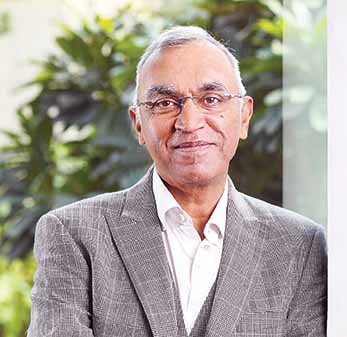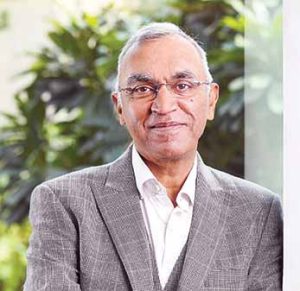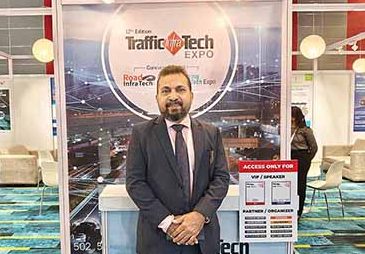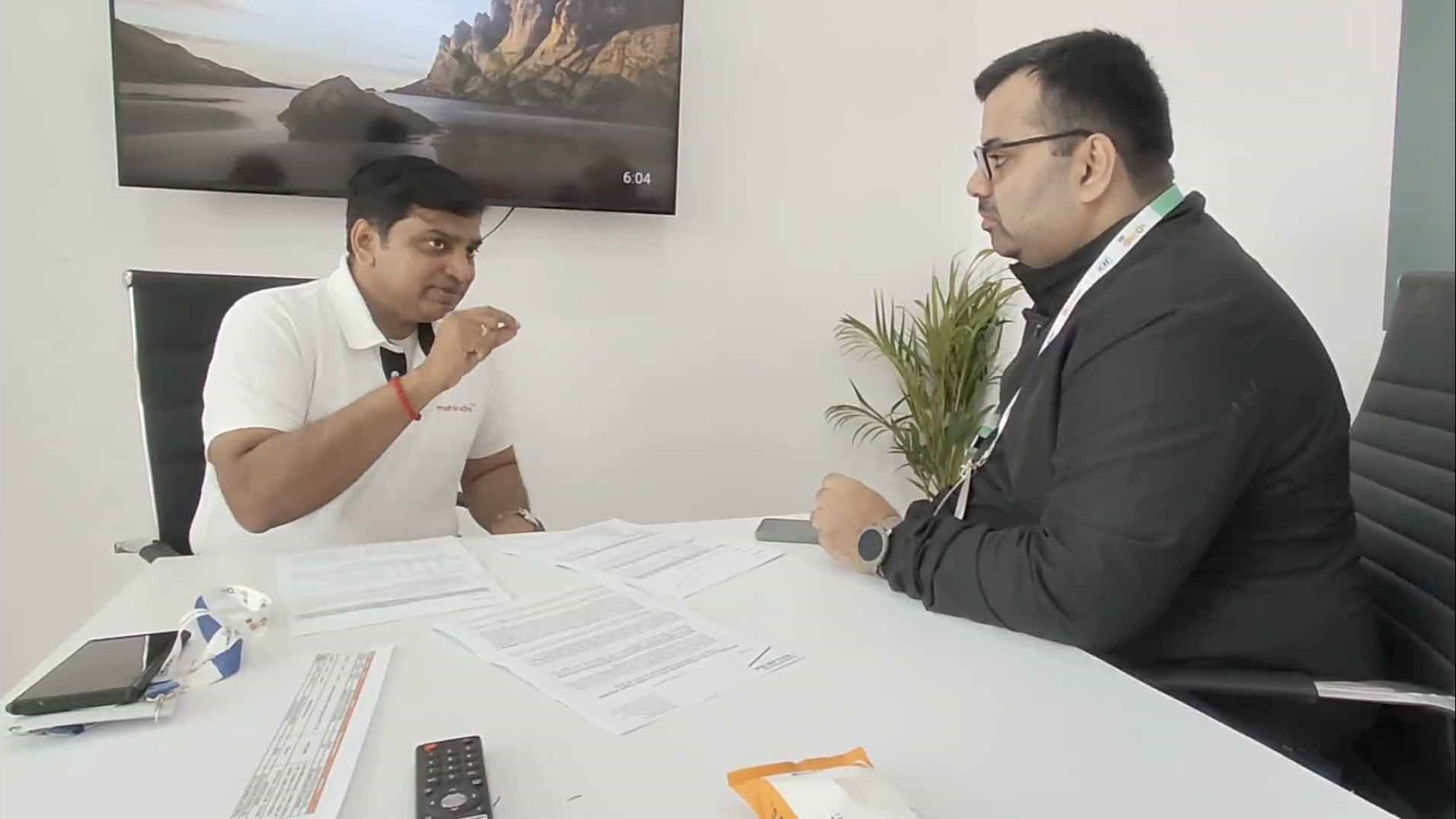In an industry talk session, Satish Sharma, President of the Asia Pacific, Middle East & Africa (APMEA), Apollo Tyres Ltd. and Chairman, Automotive Tyre Manufacturers Association (ATMA), speaks to Ashish Bhatia on the need to re-imagine a meaningful business.
Q. What is your broad-based analysis of the industry sentiment?A. The industry has seen a fair amount of a rather tough period with challenges. We are definitely out of that cycle and have entered an up cycle now. From the time, the regulation on the axle load and before it the liquidity crisis, things were already challenging for the industry. Then came Covid-19. Now we see a revival of the economy and the up cycle forming for the CVs. Having said that, the expectation is that a V-shaped recovery will help the industry go back to a pre-pandemic level. I see it happening slowly in a gradual and organic manner. It’s taking its time and for the good in my opinion. It’s a far surer way and yes, everything points towards a recovery. All it leaves is the extent of recovery and the pace of it to be debated.
I must add that the recovery is a fractured mandate and various segments, for example, the people movers with the bus segment are back. A segment that suffered the most. If you compare it to the low base of the bus segment in Covid-19, yes it’s a V-shaped recovery. The tippers were always doing well. The multi-axles and Medium & Heavy Commercial Vehicles (M&HCVs) are now beginning to come around. It depends on which segment you are looking at, the market you are looking at and so the shape of recovery is different for different segments.
Q. Are there any weak links in the value chain both upstream and downstream and do you see the stakeholders hand holding one another?
A. The value chain as such is a strong one. The weakest would be the raw material from a country standpoint. So from that perspective, our consumption is ahead by ~40 per cent of our production. Therefore, we are net importers and are left to deal with the vagaries of the exchange rate, the geopolitical risks, and the risk of natural disasters from flooding to draughts. So we are exposed to many of those risks. We are trying to offset it by focusing on the North-East, going beyond Kerala to try and produce Natural Rubber (NR). Everywhere, there are a whole lot of opportunities driven by changes that are happening. That is quite exciting.
More than hand holding, I would call the recent efforts as teamwork. There is a better openness and appreciation of each other’s concerns. Knowledge sharing that might benefit someone else has helped. It was a time when everybody said we are all in it together and will get out of it together. There was more empathy and listening. It all contributed to good teamwork and bonding. The industry, despite being in a very challenging period is looking at it as things of the past. We’ve benefitted from a lot of learnings with every member on board. The good part is that people are putting into practice, permanently, many of those learnings. As an industry, we have come out of the challenging period, a stronger unit than before.
Q. A word on the OEM and tier supplier contractual agreements. Are these designed to create a level playing field?
A. Finally, everything boils down to market forces. You can’t go against the law of nature. So if a certain market segment has leverage over another market segment that leverage will only play out. The context would be in which environment are you operating. If it’s an inflationary trend it plays out in a certain manner; a recessionary trend plays out in a certain manner. That’s the nature of the business. One can’t really change that. Everybody is bleeding and while there is an understanding, you also need to show, what is it that you can do differently during these stressful periods. That’s what actually makes all the difference. The leverage that one has will always be there irrespective of the times, it’s only the tone and manner that perhaps might change.
Q. Are the projections of the automotive industry’s contribution to economic growth in the Amrit Kaal burdening or attainable?
A. The automotive industry in India has never disappointed. It’s been at the forefront of leading the economy. I think, the nature of geopolitics, the manner in which the world is playing out, it looks like India is the flavour. Recently, the Mckinsey Chief Executive Officer spoke of it being not only India’s decade but the century. A couple of other people have voiced a similar scale of optimism. I share that optimism. I think, if you connect the dots on what’s happening around the world, coupled with India’s standing on the life cycle, from the maturing technology to the manufacturing progress to the organic strengths of digital technology, and getting to the intersection of the mechanical and the electronic world. All of these point towards a formation of momentum for India.
It’s not just the domestic market which in any case is very big, the address ability of Indian products is vastly improving by the day. Therefore Indian products will find favour around many markets of the world. It gives a positive sense. Also, Indian entrepreneurs have become more confident. They have stepped out, they’ve upped the technology game and built collaborations. The results of this are still ahead of us but one can see them in the making.
Q. What has been the direct impact of the government’s infrastructure impetus on the tyre manufacturers?
A. The government is absolutely right. When you build a road, the multiplier effect is always north of 10x. It is a very big multiplier force. It doesn’t happen instantly but it plays out over a period of time. Naturally, the manufacturing industry is a sure beneficiary of this. Also, the government is impacting in more ways than one. It’s also pushing in a lot of regulations. These regulations in turn along with the growing and improving infrastructure are nudging the industry and as a result, merging it with the directions of the rest of the world. Even if manufacturers cry foul on the regulations accelerating the change, in hindsight, it always ends up making the industry stronger.
Q. How do you look at the pace of recovery at Apollo Tyres vis-a-vis the tyre industry?
A. It is at a pace slower than desired. While on a standalone basis you can make it look very good. It depends on your side, perspective and the lens with which you are looking at recovery. The automotive world at large broadly speaking is still pre-pandemic. The earlier highs in different categories have happened in different years of the past. One would think that the tyre industry domestically could have done better. The volatility of everything happening around it comes finally on all the components. From that perspective, you always feel it could be better; you prepare for something to be bigger than what it actually turns out to be. Here, I must stress the fact that the volatility is huge. One month goes very good and makes you feel good followed by a slower month. It’s a bit of a start-stop scenario with respect to the wider momentum that one expects and so a slightly slower pace than expected.
Q. How soon do you expect Apollo Tyres and the industry as a whole to scale past the pre-pandemic performance peaks?
A. That way we are scaling our peaks. Our quarterly turnovers are definitely the highest ever. But it’s also got some inflation built in. Prices have been raised. Even if I were to net out we are better than before. It’s just that in our understanding of the India growth story, we portrayed a far bigger scenario. So from an expectations perspective, the jump is not that big.
Q. Would you be able to assess the near-to-medium term sectorial outlook on a segment, tonnage basis by looking at the tyre consumption trends at large?
A. We do not track the market on a tonnage basis the way the OEMs do. On a tonnage basis, my sense is that the growth is much higher on a unit basis. We are carrying far higher tonnage on the same unit of a CV. The vehicles have grown; the number of axles has increased. While the axle load has reduced the units it is allowing greater tonnage per vehicle unit (~20-25 per cent higher tonnage). We don’t track that on a tonnage basis but it could be a higher proportion.
Q. Would you say operating margins have been and continue to be a concern area for the bottom line? How are you juggling the balancing act from an end consumer perspective?
A. The pressure on operating margins is huge. Compared to a period of 17-18 per cent operating margins today we are on a high single-digit number. That’s quite a massive reduction. Relatively, compared to the industry, given the strength of our products, our distribution and every value-addition, we are trying to do a better job than our peer group. On a standalone basis, we wish we could have done better. We should have done better finally given that as businesses, the inflation is borne by the end user.
Because we are absorbing the inflation of our supplier group into our products, to that extent, the cost is passed back to us. Many of these costs can’t be absorbed by us over a long period. We tried our best but we definitely hoped to do better. There is no case for rolling back the price hikes in the foreseeable future. And that is to do with a high single-digit operating margin. Even with some softening of prices, at best, one can hope for convergence. Our task is cut out. So maybe the period of raising prices might stop, and the effort will be to hold on to levels where we have reached so far. I do not see that happening either.
Q. Has the equation of domestic NR production vis-a-vis dependency on the import changed with the focus on the former? How long before we get to a level which could be an industry tipping point?
A. We are yet to reach that point. The imports are of the same magnitude of 35-40 per cent. While the rubber tonnage has grown so has the Total Industry Volumes (TIV). The non-tyre application of rubber has gone up hugely during the pandemic. Be it allocation for PPEs, disposables etc. contributing to a higher proportion further skewing the equation. So imports continue to be a large portion. Of course, the efforts are there to create North East as a hub. But the rubber tree growing process is a long one. The rubber tree takes anywhere up to seven years before it becomes productive. So one starts with experimentation and then with the whole ecosystem. So North East does contribute to rubber procurement and it is moving in the right direction. The Indian tyre companies are contributing a lot towards this effort but still a long road ahead before we reach any tipping point.
Q. A word on pursuing your contribution towards a circular economy using more alternate, and sustainable input raw materials?
A. Year-over-Year (YoY) there is an improvement. The serious part of the circular economy though is still to kick in. Going forward also it will improve on a YoY basis as we move towards our internally set targets which are very ambitious, and audacious. The usage of sustainable materials from hereon is set to exponentially increase. It is still early years in that journey.
Q. What is the business contribution of the segments you are present in including the one’s that you have recently entered? Any white spaces as a full range player?
A. We do not just look at Apollo Tyres as a full-range player but as the freshest, smartest, youngest player with the potential to displace many other peer members from the positions that we’re holding onto. We are looking very good on the range aspect and from a perspective of securing our right to win in various categories.
Q. How are you complying with the new standards for the tyre industry? Will this compliance come at a price that may have to be passed on to the customer inevitably?
A. We welcome regulations because it is nudging the industry to merge with the developed world. For example, the star labelling regulation is making the consumer more informed on his purchase journey. In the voluntary phase of trials, we already brought in five-star rated tyres in passenger cars and light truck tyres. It allows us to differentiate ourselves. Of course, there are challenges with respect to the testing infrastructure which wasn’t there earlier. With the formation of the National Automotive Testing and R&D Infrastructure Project (NATRiP) and National Automotive Test Tracks (NATRAX), the government has done a lot and they are trying to make sure that all the investment that has gone in, it starts to give returns through enhanced testing in its early days. We need to overcome the teething issues as an industry.
Q. How has the focus on digitisation at Apollo Tyres shaped up from fronts like sales to manufacturing against the backdrop of a new hub inaugurated in the UK?
A. A lot is happening on that front as one of the levers of attaining our vision. Both from a top line as well as margins growth perspective. Every aspect as you rightly said is being touched by it from procurement to the dealerships and the end user life cycle. Whether its the efficiency of our processes in the plant and elsewhere. It has extended to connectivity and capturing data and learning to leverage that big data for actionable, business insights on the road to improvement. In addition to preparing new business models altogether to be able to tackle the future differently. We are hopeful of learning and enhancing our capabilities.
Q. What are the current utilisation level trends across your plants today?
A. On a Month-over-Month (MoM) basis, this keeps changing. 85 per cent would have been a fair figure for the first quarter (Q1-FY23) with it dropping a little to align with seasonality like monsoons. We are hopeful of getting back up there.
Q. Given these volatilities would it be fair to assume that CapEx cycles would be postponed?
A. Definitely. We have invested for our immediate growth with the current focus on sweating the assets and digitalising the ecosystem among other priority focus areas. So there is a case to not just up the utilisation but within that utilisation to be able to de-bottleneck and to change the approach and be able to sweat higher than normally.
Q. How have exports fared in comparison for the company? Does the government’s push on signing FTAs with target export markets help in giving it a push?
A. The government is working on Free Trade Agreements (FTAs) in a very judicious manner. They are consulting the industry and at the end of the day, it is a give-and-take equation. The government is well seized on which sector it can negotiate for and what is in the best interest of our country. They have sought audience from us when needed where we have put across our points of view. We trust the government to make the right calls in the best interests of the industry and the nation as a whole.
Q. Compared to OE sales how big is the used PV and CV market opportunity for Apollo Tyres and the tyre industry as a whole?
A. From category to category that opportunity varies. In a CV that replacement cycle is quicker; in the case of cars, it’s four to five years.
Q. What is the focus on strengthening service offerings as a strong non-core revenue stream?
A. Yes, the service aspect is increasing. While surveying the market a few days back, we met up with our CV zones head. He was looking at a 4x growth in two years and much of it was attributed to service. From front-end load to being able to sell the tyres. That was quite refreshing to see how the market orientation is beginning to change. With the BSVI and technology-embedded products, service orientation comes to the fore organically. We are equipping our network to be able to deal with it, to empower them. Going about differently, we, therefore, have the largest service network. The objective is to look at doing things differently with the so-called sales network and the service network.
Q. To sum up, how resilient, diversified and future-ready is Apollo Tyres?
A. Apollo Tyres is inherently emerging as a strong player even if I may say so myself. The point is not to sit on our laurels but to use the tools at our disposal to be able to re-imagine the business. It entails a capability-building period, a whole lot of experimentation and calls for high levels of innovation. So while we are very strong on the earlier pieces of the way business operated that was about a product, traditional network or traditional sourcing we have to reinvent on all the fronts to do things differently. There are areas where we could be ahead of the curve and in other areas a laggard. There could be other fronts where we find ourselves re-experimenting and re-imagining. It’s exciting times with the best part being that it is a great leveller for every company. We believe in our strengths and we do believe that we can create a much more meaningful business as compared to what we’ve achieved so far. Therefore we hope to get stronger, better, more agile, more humble and more customer-centric. Marrying to the volatility is both exciting and stressful on a lighter note.










Leave a Reply